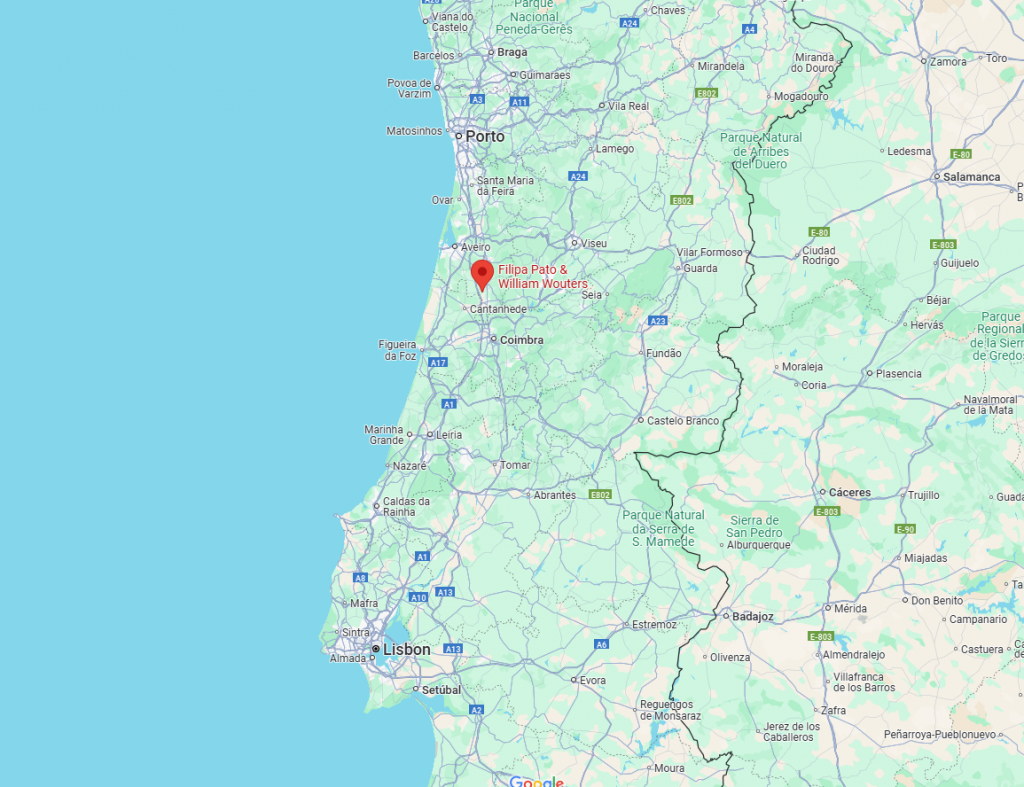The Bairrada wine region is located in the centre of Portugal, between the Atlantic Ocean and the Serra do Buçaco mountains. This area, which is well-known for its clay-limestone soils and marine environment, has a long history of making outstanding wines, especially from the native Baga grape. Filipa Pato and William Wouters are two of the area’s most innovative winemakers. Their wines capture the essence of Bairrada while pushing the limits of sustainability and creativity.

Filipa Pato & William Wouters on Google Maps
A Cellar Built on Heritage and Vision Filipino Pato, daughter of Portuguese winemaking legend Luís Pato, was practically born among the vines and although her upbringing instilled in her a deep respect for tradition, it is her adventurous spirit that pushes boundaries. Her husband, William Wouters, complements her vision with a unique background as a celebrated chef and sommelier. Together, they have transformed their cellar into a harmonious blend of old-world techniques and forward-thinking innovation. Their cellar is located in the heart of Bairrada, surrounded by vineyards that highlight the region’s renowned clay-limestone soils, and their dedication to biodynamic farming is immediately apparent as soon as you enter their space.
Fundamentals of Biodynamics
The Pato-Wouters cellar’s embrace of natural processes and lack of artificial chemicals are among the first things you notice. Their biodynamic method uses natural preparations and lunar cycles to care for the plants, treating the vineyard as a living creature. This idea carries over into the cellar, where they emphasize low-intervention winemaking to highlight the unique qualities of the grapes.

Important facets of their biodynamic procedures include:
Natural Fermentation: All wines use native yeasts to ferment naturally, preserving the vineyard’s distinct microbiota.
Minimal Sulphites: To maintain stability without sacrificing the integrity of the wine, sulphur is applied sparingly.
Unfiltered and Unfined Wines: Their wines maintain their entire range of flavours and textures by eschewing these procedures.
Examining the Craft
Tradition and creativity come together in the basement. Stainless steel tanks, concrete eggs, and large oak vats cohabit; each was selected to accommodate particular grape varieties and winemaking methods. Filipa and William think it’s critical to adjust their techniques to the requirements of each vintage to bring out the best in their wines.
The Baga grape, associated with Bairrada, is the main ingredient in their red wines. Baga is gently macerated in the cellar to bring out the flavour without overpowering the tannins. Large oak barrels and amphorae are used for ageing, producing wines with structure, elegance, and exceptional ageing potential.

Equal attention is given to white types such as Cercial and Bical. While maintaining the wines’ vibrant acidity, fermentation in concrete eggs adds to their textural complexity. These wines frequently stay on the lees for a long time, which gives them a rich flavour and a creamy mouthfeel.
In their portfolio, sparkling wine has a specific place. Using the age-old technique, they create lively and accurate sparkling wines that capture Bairrada’s maritime impact. With prolonged ageing on the lees to generate complex brioche and citrus flavours, secondary fermentation occurs in the bottle.
Red Wines: Nossa Calcário Tinto: 100% Baga; extensive wine portfolio.
Post Quercus Baga: aged and fermented in clay amphorae; 100% Baga.
Rosé Wine: 3B Rosé: Made from Baga and Bical.
Sparkling Wines: 3B Sparkling White: a combination of Maria Gomes and Bical. 3B Sparkling Rosé: Baga and Bical combine to create a lively sparkling wine with aromas of rich red fruit and crisp acidity.
Experimental Wines & Special Releases:
The 100% Bical wine Nossa Calcário Amphora Branco is fermented and matured in clay amphorae.
Dinâmica Orange: A Bical and Cercial-based orange wine with prolonged skin contact.
The Tasting notes